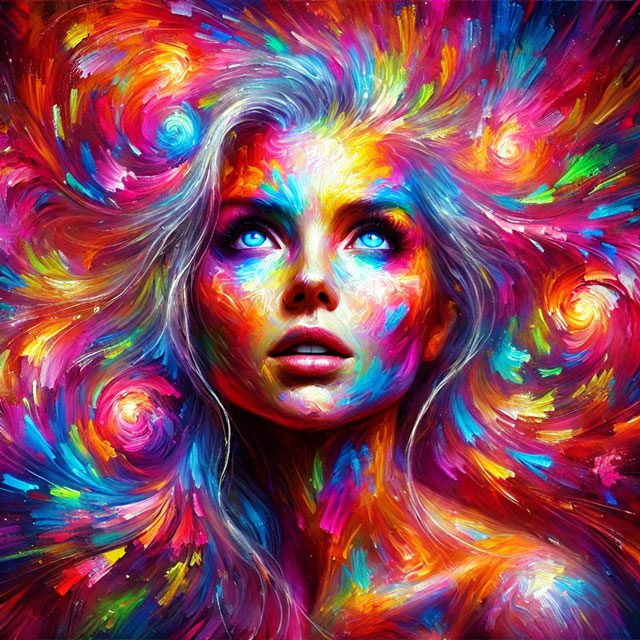
Color is everywhere. From the clothes we wear to the logos of the brands we love, color plays a massive role in our lives. But have you ever stopped to think about why certain colors draw you in? It’s not just a coincidence or a matter of taste. Marketers have spent decades perfecting the art of color manipulation to influence your decisions, often without you even realizing it. In this article, we’re going to uncover the secrets behind how marketers use colors to control your behavior, the history of this practice, and how you can protect yourself from falling into their colorful traps.
The Hidden Power of Color
Colors are more than just visual experiences; they are psychological tools that affect our emotions and actions. Red can make your heart race, while blue might calm you down. Marketers know this, and they exploit it. When you walk into a store or browse a website, the colors you see are carefully chosen to push you in a certain direction. This is not a random choice; it’s a calculated strategy designed to trigger specific emotional responses.
Psychologists have long studied the link between color and emotion. For example, the color red is often associated with urgency and excitement. This is why sales signs and clearance banners are usually red. On the other hand, blue is linked to trust and dependability, which is why financial institutions like banks often use blue in their branding. These emotional triggers are not just accidental; they are the result of years of research and testing.
Our preferences for certain colors can also reflect our personalities. Studies suggest that people who prefer blue are often seen as calm and reliable, while those who favor red might be more energetic and outgoing. Marketers use this information to create targeted campaigns. If they know their audience is made up of people who like a particular color, they will use that color to appeal to them on a deeper level.
But this goes beyond just liking a color. Marketers tap into the emotional and psychological effects of colors to influence how we feel about a product or brand. They use colors to create associations in our minds that make us more likely to buy their products. This is why understanding the psychology of color is so crucial to understanding how marketing works.
The History of Color in Marketing
The use of color in marketing is not a new concept. It has been evolving for over a century, with significant milestones that have shaped how we view and respond to colors today. In the early 20th century, advertising was primarily black and white. But as color printing became more accessible, advertisers began to realize the potential of using color to attract attention and convey messages more effectively.
One of the most significant shifts in color use came with the advent of color television in the 1950s. Suddenly, brands had a new medium through which they could engage with consumers. The introduction of color TV ads revolutionized the industry, allowing marketers to use vivid, dynamic colors to capture viewers’ attention. This period marked the beginning of the modern era of color in marketing.
The 1960s and 1970s saw further advancements as brands began to associate specific colors with their identities. Companies like Coca-Cola and McDonald’s started using color as a core part of their branding strategy. Coca-Cola’s red became synonymous with excitement and happiness, while McDonald’s golden arches became an iconic symbol recognized worldwide. These brands were not just selling products; they were selling feelings and experiences, all through the power of color.
Today, the science behind color choices is more sophisticated than ever. Brands conduct extensive research to determine which colors resonate most with their target audiences. They use focus groups, surveys, and even neuromarketing techniques to test different color schemes and see how consumers react. This research has led to some of the most successful and recognizable branding in history, all built on a foundation of color psychology.
Color and Consumer Behavior
Color doesn’t just make things look pretty; it directly influences your decisions as a consumer. Research shows that color can account for up to 90% of the reason why people make a snap judgment about a product. This is why companies invest so much time and money into getting their colors just right.
When you’re shopping, whether in a store or online, the colors you see are not random. Retailers use specific colors to create certain feelings and behaviors. For example, red is often used in clearance sales because it creates a sense of urgency. The color signals that something is important and needs your attention. This can make you feel like you need to act quickly, leading to impulse purchases.
Online shopping has also taken color psychology to new levels. E-commerce platforms carefully design their websites using color schemes that guide users through the buying process. For instance, a “Buy Now” button might be in a bright color like orange or red to make it stand out and encourage clicks. These small design choices can have a significant impact on conversion rates and sales.
Marketers also use color to influence how you perceive value. For example, luxury brands often use black and gold in their packaging and branding to create an association with sophistication and exclusivity. These colors are chosen because they make the product seem more valuable and desirable, even if it’s not any different from a less expensive alternative.
The influence of color on consumer behavior is so strong that companies continuously test and refine their color choices. They use A/B testing, where two different versions of a website or ad are shown to different groups of people, to see which color scheme performs better. This data-driven approach ensures that the colors used are not just aesthetically pleasing but also effective in driving sales.
The Dark Side of Color Manipulation
While the use of color in marketing can be fascinating, there’s a darker side to it as well. Marketers often use color to influence consumers on a subconscious level, leading them to make decisions without fully understanding why. This manipulation can sometimes border on the unethical, especially when it’s done in ways that consumers are unaware of.
One of the most subtle ways marketers use color is through subliminal triggers. These are visual cues that operate below the level of conscious awareness, influencing emotions and behaviors without you realizing it. For example, fast-food restaurants often use warm colors like red, orange, and yellow because they are known to stimulate appetite and create a sense of comfort. These colors can make you feel hungry or crave certain foods, even if you weren’t thinking about eating before.
Another example is the use of color in political advertising. Campaigns often use colors to evoke specific emotions, like trust or fear, to sway voters. For instance, a candidate might use blue in their campaign materials to project an image of trustworthiness and stability. Conversely, they might use dark or ominous colors in attack ads to create a sense of fear or distrust towards their opponent. These tactics are designed to manipulate your emotions and decisions without you even noticing.
The ethical implications of this kind of manipulation are significant. On one hand, marketers argue that they are simply using all the tools at their disposal to make their products or ideas more appealing. On the other hand, consumer rights advocates argue that this kind of manipulation is unfair and deceptive, particularly when it targets vulnerable populations like children or the elderly.
There is also a growing concern about the impact of color manipulation in the digital world. As online shopping and social media continue to dominate our lives, the potential for color-based manipulation increases. Marketers can use data from your online behavior to personalize ads and websites in ways that are specifically designed to exploit your psychological tendencies. This raises important questions about privacy and the ethical use of consumer data.
Real-World Examples and Case Studies
To truly understand the power of color in marketing, it helps to look at some real-world examples. These case studies illustrate how brands have successfully used color to build their identities and influence consumer behavior on a global scale.
Coca-Cola is one of the most iconic examples of color in branding. The company’s use of red and white has become synonymous with excitement and happiness. Coca-Cola’s red is more than just a color; it’s a feeling. The company has spent decades reinforcing this association through advertising, packaging, and even holiday campaigns like the famous Coca-Cola Santa Claus. This consistent use of red has helped Coca-Cola become one of the most recognized and beloved brands in the world.
Another powerful example is Apple’s use of white and minimalism. Apple’s products and branding are known for their clean, simple designs, often dominated by the color white. This choice is not just about aesthetics; it’s about creating an association with innovation, simplicity, and elegance. Apple’s use of white suggests that their products are cutting-edge and easy to use, which has been a key factor in their success.
Google’s multicolor branding is another fascinating case study. The company’s use of primary colors (red, yellow, blue, and green) creates a sense of playfulness and approachability. This color scheme is instantly recognizable and has become a core part of Google’s brand identity. It also reflects Google’s mission to make information accessible and fun for everyone. The use of bright, cheerful colors helps to position Google as a friendly and user-oriented company.
These examples show how color can be a powerful tool in creating and maintaining a brand’s identity. By consistently using specific colors, these companies have been able to build strong associations in the minds of consumers, making their brands instantly recognizable and emotionally resonant.
How to Protect Yourself from Color Manipulation
Now that you know how marketers use color to influence your decisions, you might be wondering how you can protect yourself from falling into their traps. The first step is to become a more conscious consumer. This means paying attention to the colors you see in advertising and marketing and thinking critically about how they might be influencing you.
One way to do this is by practicing mindfulness when shopping. Before making a purchase, take a moment to consider why you are drawn to a particular product. Is it because of the color? How does the color make you feel? By being aware of these factors, you can make more informed decisions and avoid impulse purchases driven by color cues.
Another important step is recognizing color manipulation in ads. Marketers use color to create specific emotional responses, and being able to identify these tactics can help you resist their influence. For example, if you notice that a sale sign is in red, remind yourself that the color is designed to create urgency. This awareness can help you take a step back and decide if you really need to make the purchase.
You can also protect yourself by learning about the common color schemes used by different brands. Knowing that luxury brands often use black and gold, for example, can help you see through the illusion of value that these colors create. By understanding the psychology behind these color choices, you can make more rational decisions that are not swayed by marketing tactics.
Lastly, it’s important to stay informed about the latest trends in marketing and advertising. As technology continues to evolve, so do the ways in which marketers use color to influence consumers. By keeping up with these trends, you can stay one step ahead and avoid being manipulated by new and emerging tactics.
The Power Is in Your Hands
Color is a powerful tool that marketers use to influence your behavior, often in ways you might not even realize. From the psychology of color to the history of its use in marketing, we’ve explored how colors can shape your emotions and decisions. But now that you know these secrets, the power is in your hands. By becoming a more conscious consumer and recognizing the tactics used to manipulate you, you can take control of your choices and resist the influence of color manipulation.
As the famous artist Pablo Picasso once said, “Colors, like features, follow the changes of the emotions.” Understanding this can help you navigate the world of marketing with your eyes wide open, making decisions based on your true needs and desires rather than the colors that marketers want you to see.
This article is designed to equip you with the knowledge you need to recognize and resist the subtle ways in which colors are used to influence your behavior. Now, you have the tools to make more informed, intentional choices in your daily life.




